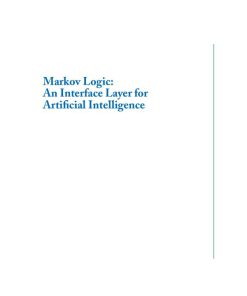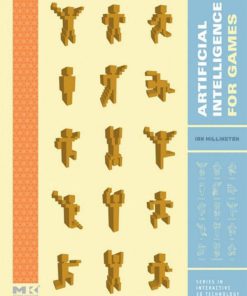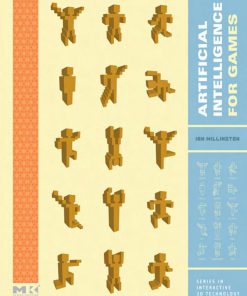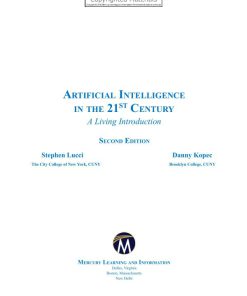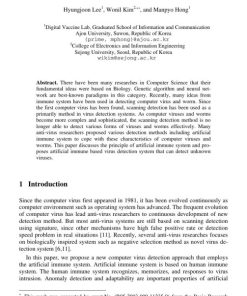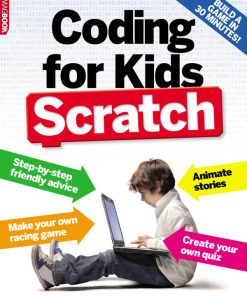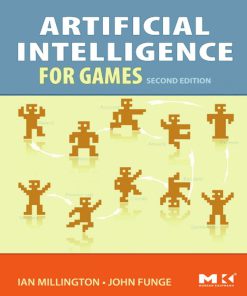Biologically Inspired Artificial Intelligence for Computer Games 1st Edition by Darryl Charles, Colin Fyfe, Daniel Livingstone, Stephen Mcglinchey 1591406463 9781591406464
$50.00 Original price was: $50.00.$25.00Current price is: $25.00.
Authors:Darryl Charles, Darryl Charles, Colin Fyfe, Daniel Livingstone, Stephen Mcglinchey , Series:Gaming [71] , Author sort:Darryl Charles, Darryl Charles, Colin Fyfe, Daniel Livingstone, Stephen Mcglinchey , Languages:Languages:eng , Published:Published:Dec 2007 , Publisher:IGI Global
Biologically Inspired Artificial Intelligence for Computer Games 1st Edition by Darryl Charles, Colin Fyfe, Daniel Livingstone, Stephen Mcglinchey – Ebook PDF Instant Download/Delivery. 1591406463, 9781591406464
Full download Biologically Inspired Artificial Intelligence for Computer Games 1st Edition after payment
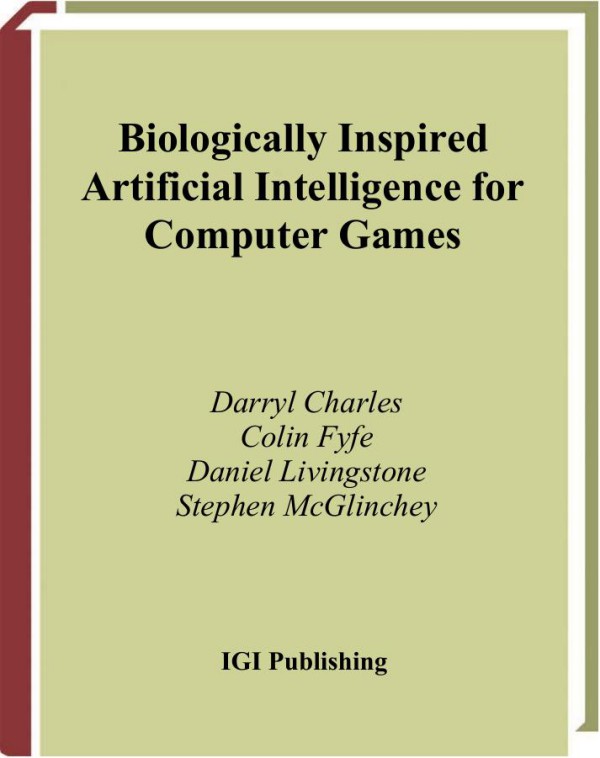
Product details:
ISBN 10: 1591406463
ISBN 13: 9781591406464
Author: Darryl Charles, Colin Fyfe, Daniel Livingstone, Stephen Mcglinchey
Computer games are often played by a human player against an artificial intelligence software entity. In order to truly respond in a human-like manner, the artificial intelligence in games must be adaptive, or respond as a human player would as he/she learns to play a game. Biologically Inspired Artificial Intelligence for Computer Games reviews several strands of modern artificial intelligence, including supervised and unsupervised artificial neural networks; evolutionary algorithms; artificial immune systems, swarms, and shows—using case studies for each to display how they may be applied to computer games. This book spans the divide which currently exists between the academic research community working with advanced artificial intelligence techniques and the games programming community which must create and release new, robust, and interesting games on strict deadlines, thereby creating an invaluable collection supporting both technological research and the gaming industry.
Biologically Inspired Artificial Intelligence for Computer Games 1st Table of contents:
Chapter I: Contemporary Video Game AI
Introduction
The Dawn of the Computer Video Game
Contemporary Video Game AI
Future of Game AI
Conclusion
References
Chapter II: An Introduction to Artificial Neural Networks
Introduction
Biological Neural Networks
Artificial Neural Networks
Neural Networks Classification
Learning in Artificial Neural Networks
References
Chapter III: Supervised Learning with Artificial Neural Networks
Introduction
The Delta Rule
Multilayered Perceptrons
Issues in Backpropagation
An Example
References
Chapter IV: Case Study Supervised Neural Networks in Digital Games
Introduction
Robocode
Conclusion
References
Chapter V: Unsupervised Learning in Artificial Neural Networks
Unsupervised Learning
Hebbian Learning
Hebbian Learning and Information Theory
Anti-Hebbian Learning
Independent Component Analysis
A Case Study: Independent Component Analysis
Competitive Learning
Applications
Case Study: The Self-Organizing Map and Pong
Conclusion
References
Chapter VI: Fast Learning in Neural Networks
Introduction
Radial Basis Functions
Error Descent
Pong: A Comparative Study, MLP vs. RBF
Conclusion
Reference
Endnote
Chapter VII: Genetic Algorithms
Introduction
Genetic Algorithms
The Schema Theorem (The Fundamental Theorem of Gas)
A First Example
Case Study: GA and Backpropagation ANN for Motocross Controllers
Further Reading
Summary
References
Chapter VIII: Beyond the GA: Extensions and Alternatives
Introduction
The Iterated Prisoners’ Dilemma (IPD)
N-Persons Iterated Prisoners’ Dilemma (NIPD)
References
Chapter IX: Evolving Solutions for Multiobjective Problems and Hierarchical AI
Introduction
Multiobjective Problems
Coevolution in Hierarchical AI for Strategy Games
Conclusion
References
Chapter X: Artificial Immune Systems
Introduction
The Immune System
Artificial Immune Systems
Hypermutations
The Immune Network
Agent Wars
Cooperating Strategies
Incomplete Information
Changing the Game
Duelling
Discussion
Comparison with Gas
Conclusion
References
Chapter XI: Ant Colony Optimisation
Introduction
Foraging Behaviour of Ants
Simulating Artificial Ant Colonies with theS-ACO Algorithm
Improvements to the S-ACO Algorithm
Case Study: S-ACO and Combat
Summary
Further Reading
References
Chapter XII: Reinforcement Learning
Introduction
The Main Elements
Finding the Best Policy
Temporal Difference Learning
TD(λ) Methods
Continuous State Spaces
Immediate Rewards
The Bernoulli Learner
The Gaussian Learner
Application to Games
Comparison with Other Methods
Conclusion
Further Reading
References
Chapter XIII: Adaptivity within Games
Introduction
Existing Approaches to Adaptivity in Games
Adaptive Technologies
Developing Adaptive Solutions
Emergent Gameplay
Conclusion
References
Chapter XIV: Turing’s Test and Believable AI
Introduction: Contemporary Game AI
The Popular Turing Test
The Real Turing Test?
Playing the Turing Test
Generalising the Turing Test
Measuring Believability
Believable Computer Players
Unbelievable Characters
The Embedded Turing Test
Conclusion
Further Reading
References
About the Contributors
People also search for Biologically Inspired Artificial Intelligence for Computer Games 1st:
8 examples of artificial intelligence in the workplace
artificial general intelligence vs artificial superintelligence
7 types of artificial intelligence
5 facts about artificial intelligence




